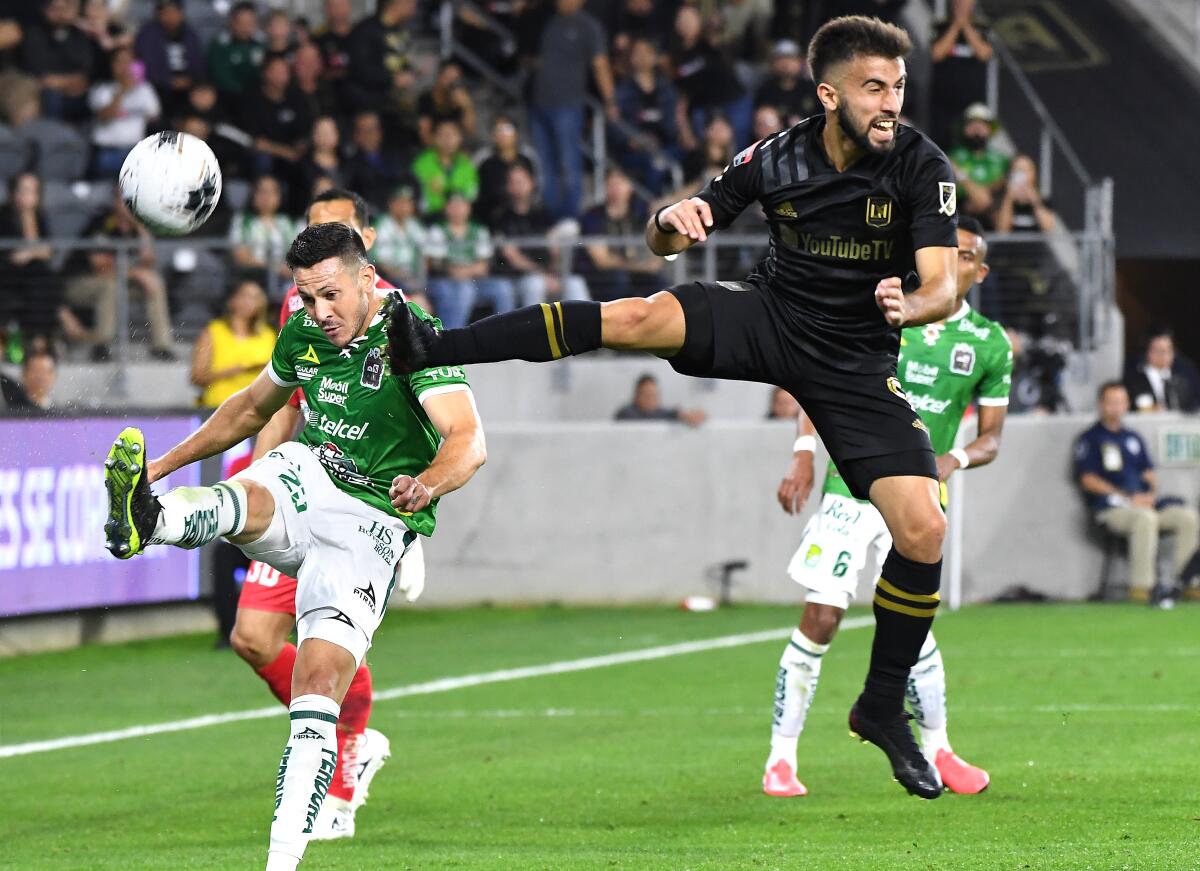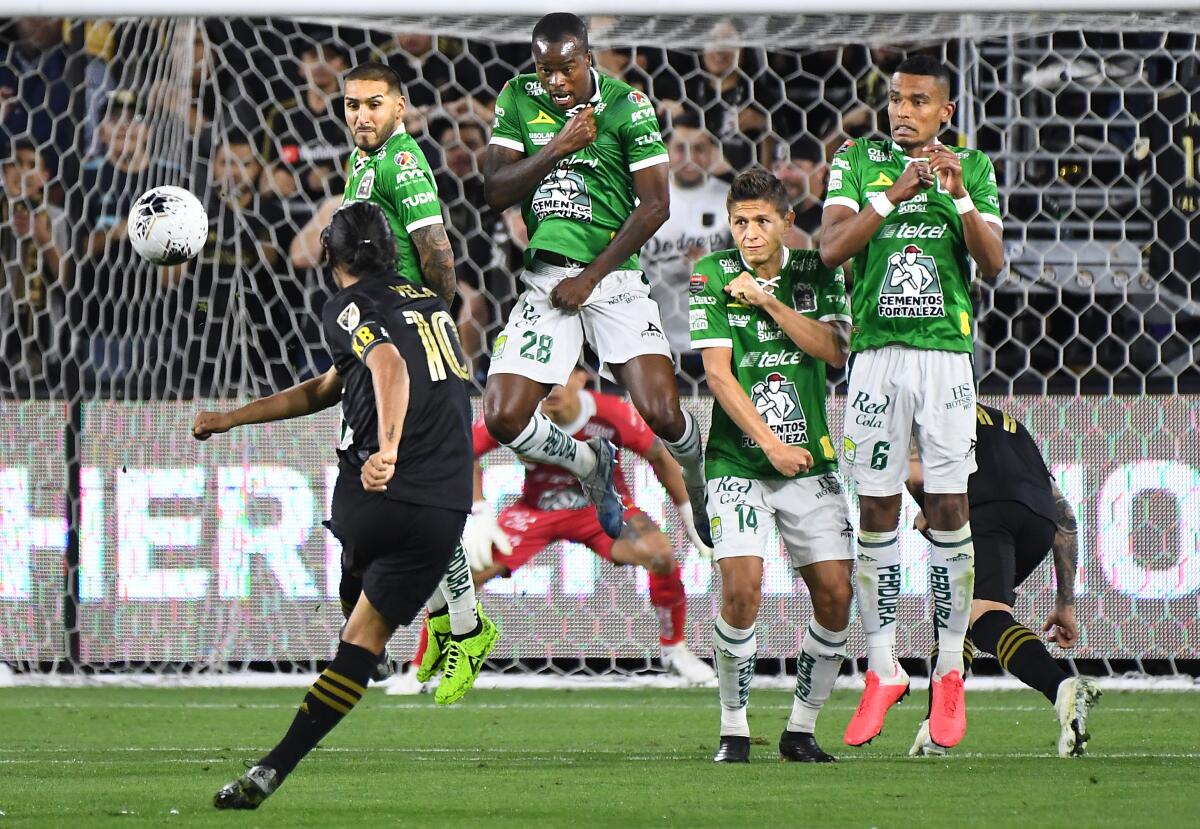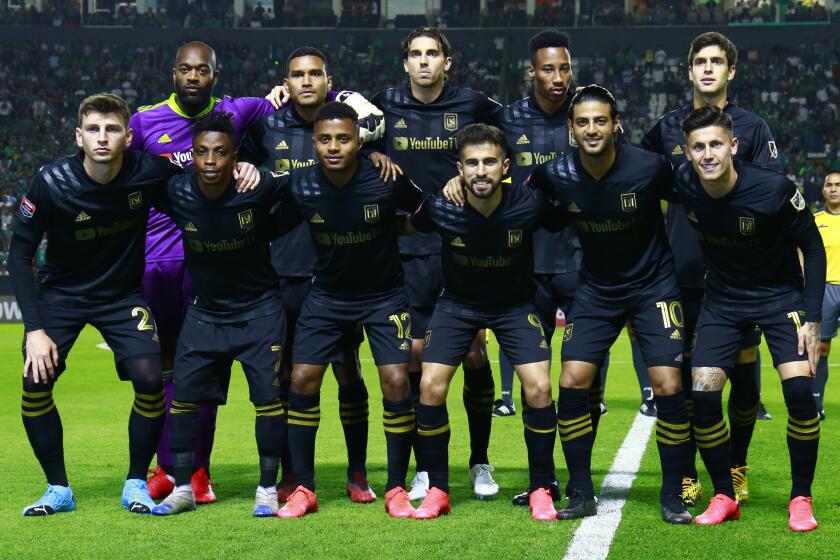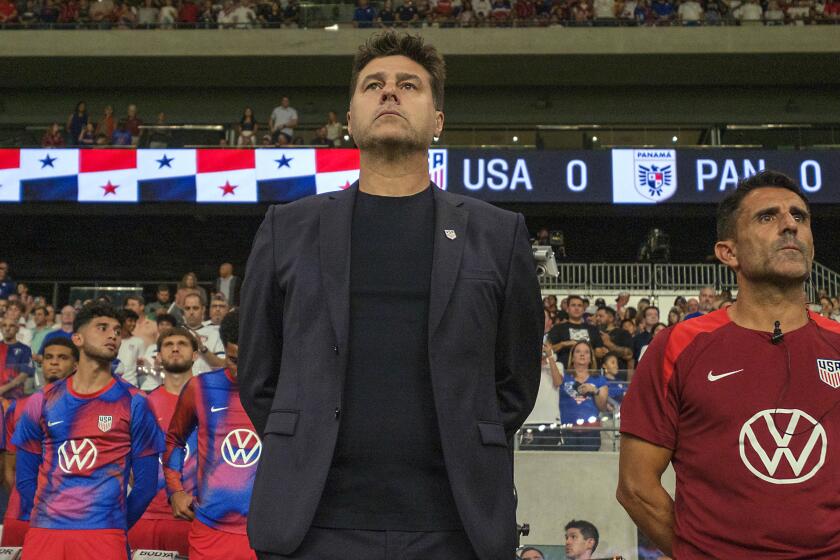Column: LAFC is stretched thin by outdated MLS rules

Bob Bradley was beaming, and rightly so.
With an emphatic 3-0 victory over León at Banc of California Stadium, LAFC reversed its two-goal deficit against its Mexican league opponent from the first leg of their two-game, aggregate-goals series.
Powered by a pair of quick strikes from Carlos Vela and a breathtaking winner by Diego Rossi, the comeback secured Bradley’s team a place in the quarterfinals of the CONCACAF Champions League.
“This,” Bradley said, “is awesome tonight.”
The spell of euphoria, however, was broken soon after.
Bradley was asked to look ahead.
LAFC’s 3-2 edge over Leon in aggregate goals over the two games will send them on to the quarterfinals with Mexico’s Cruz Azul.
Of how LAFC was forced to take on León on three days rest before its season opener against Inter Miami, Bradley said, “That makes no sense to me.”
The problem extends beyond this week. If LAFC accomplishes what Bradley envisions, this is about the coming weeks and months.
If LAFC successfully navigates its MLS and Champions League schedule at the same time, its triumphs will be a reflection of the team’s ability to find value on the margins of its rosters.
This will make the team constructed by Bradley and general manager John Thorrington the exception rather than the rule.
MLS teams are not constructed to withstand the workload of multiple competitions, an unfortunate byproduct of the league’s outdated salary-cap restrictions.
Unfortunate because MLS’ best can play with Liga MX’s best, as was demonstrated again Thursday.
Unfortunate because MLS’ best players are comparable, if not better, than its counterparts from Mexico’s Liga MX, as evidence by how Vela was by far the most gifted player on the field against León.

And unfortunate because MLS continues to have a perception problem, as the league was reminded of last month when comments by Javier “Chicharito” Hernández reignited debate about the quality of competition.
Fair or not, the image of MLS won’t dramatically change until its teams start to regularly win international competitions such as the Champions League. The previous 11 tournaments were won by Liga MX teams, including Monterrey last year.
MLS officials have openly talked about their ambitions about making the league one of the best in the world. They have spoken about wanting to compete with Liga MX.
But much of what they say sounds like lip service.
How can they realistically expect their teams to compete with Liga MX clubs when they aren’t spending as much?
The problem isn’t with the top end of rosters.
MLS’ rules allow for three designated players who can basically be paid as much as teams want to pay them.
LAFC has used their three DP positions on Vela, Rossi and 19-year-old Uruguayan attacker Brian Rodríguez. They were the difference makers against León.
To affirm its meteoric rise, LAFC is under pressure to challenge for an MLS Cup title. How will the team perform after its record-setting 2019 season?
Rossi netted a spectacular winner when he held off Fernando Navarro and floated a shot over the head of goalkeeper Rodolfo Cota. The shot bounced off the right post and into the net.
MLS has advantages over Liga MX in luring talent. Players want to live in the United States, as was the case with Vela.
The country was attractive enough to keep Zlatan Ibrahimovic with the Galaxy for two seasons. He presumably never considered playing in Mexico.
And young players such as Rossi and Rodríguez view MLS’ more physical style a better training ground for destination leagues in Europe.
In recent years, the league has invested more in its second-tier players, which has resulted in a noticeable improvement in play.
But fearful of teams spending beyond their means, MLS has remained conservative with the lower end of its rosters. And this is why its teams can’t win competitions like the Champions League.

Highlights from LAFC’s victory over León in the CONCACAF Champions League quarterfinals.
The three remaining Mexican teams in the competition — Club America, Tigres and LAFC quarterfinal opponent Cruz Azul — are 20 players deep. They can field one team for an international game in the middle of the week and another in their domestic league on the weekend.
For MLS teams, success in the Champions League has come at a price.
Toronto FC reached the final in 2018 and Sporting Kansas City earned a place in the semifinals last year, but neither team reached the MLS playoffs.
“You talk about other teams that couldn’t manage both,” Bradley said. “We’re going to try.”
MLS should be looking to help its teams, not stand in the way. If the league insists on a salary cap, fine. Figure out how much the top Liga MX teams are spending and make that the cap. Anything less is selling its own teams short.










